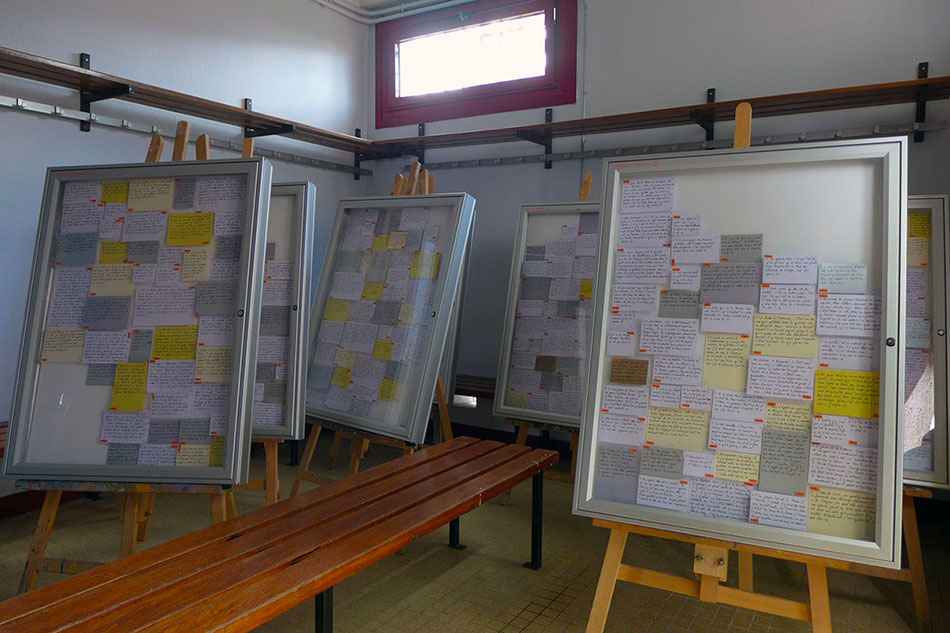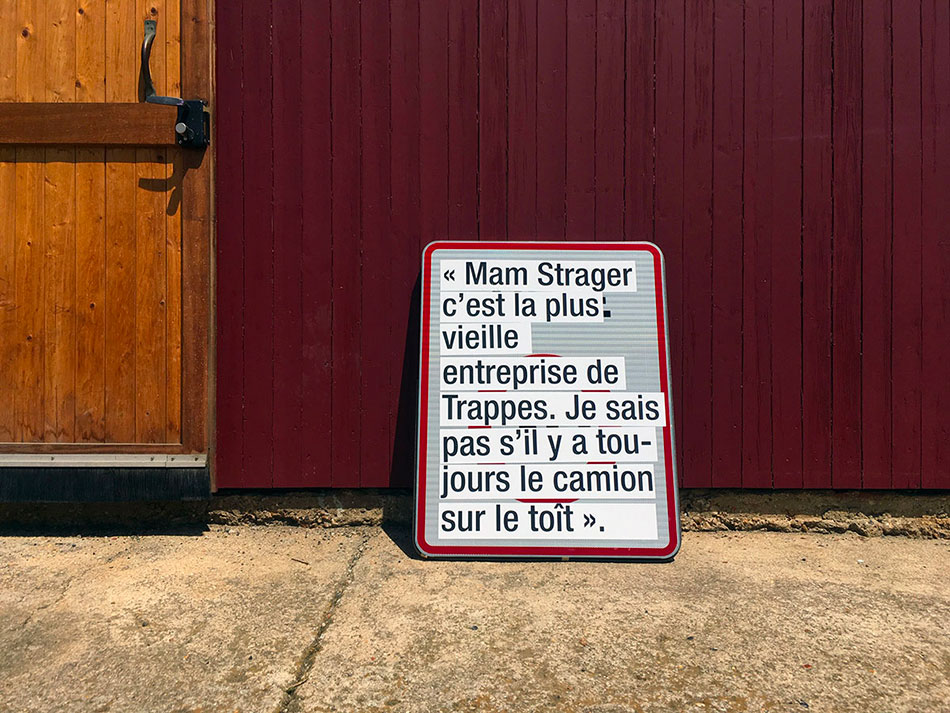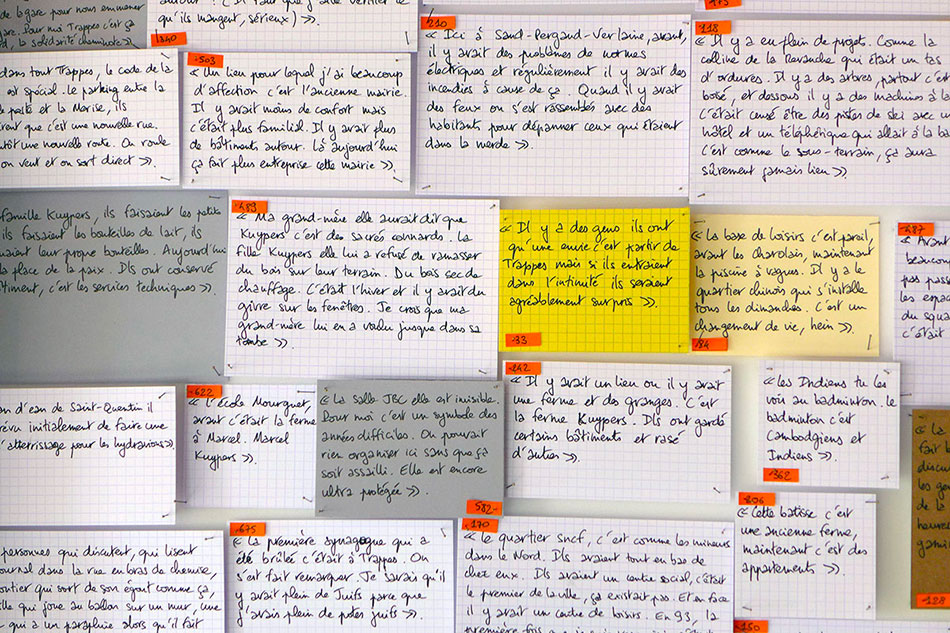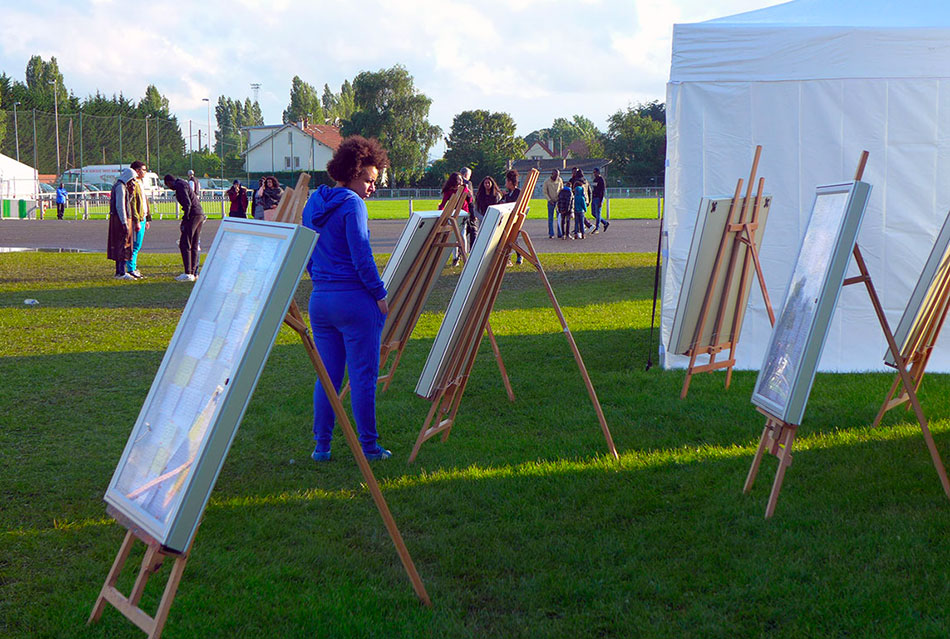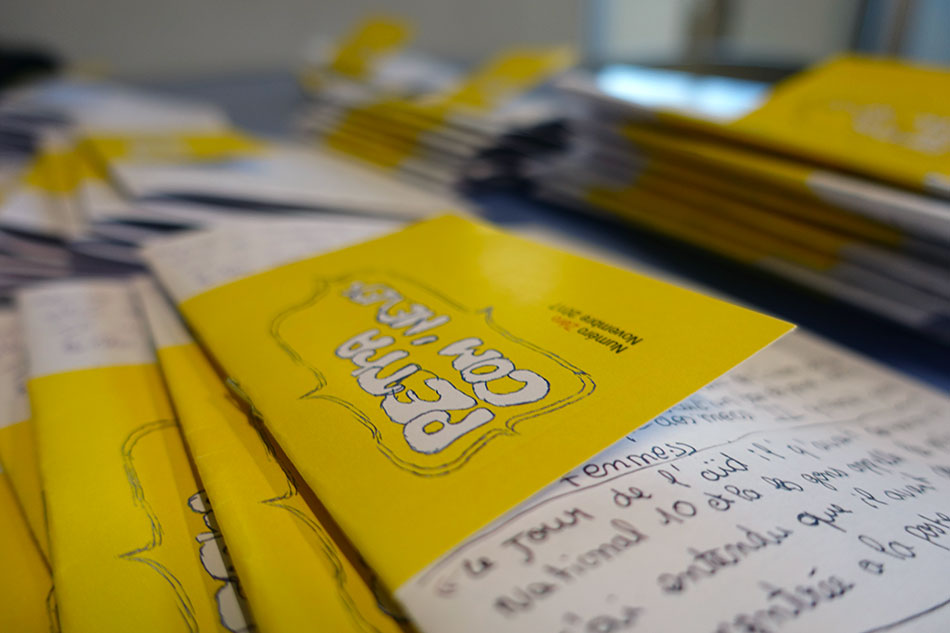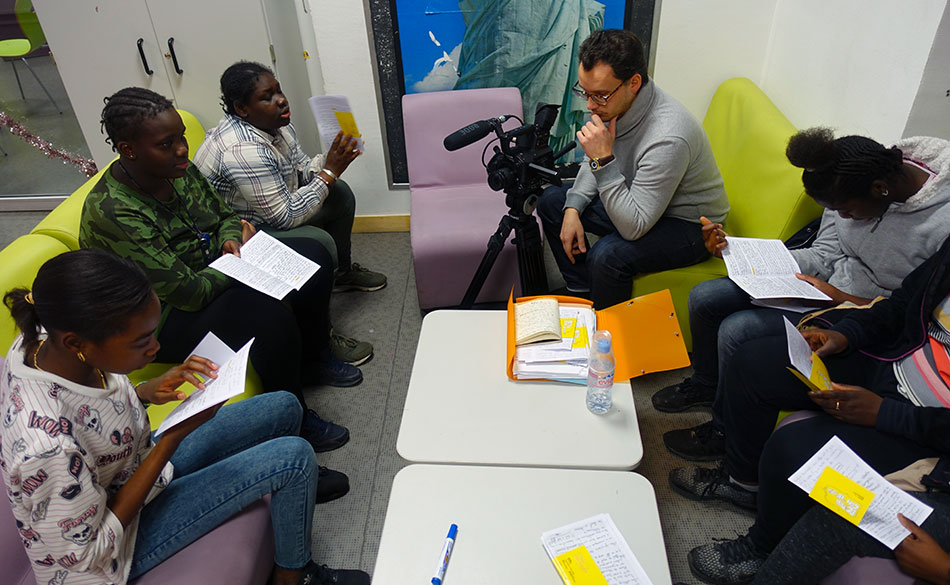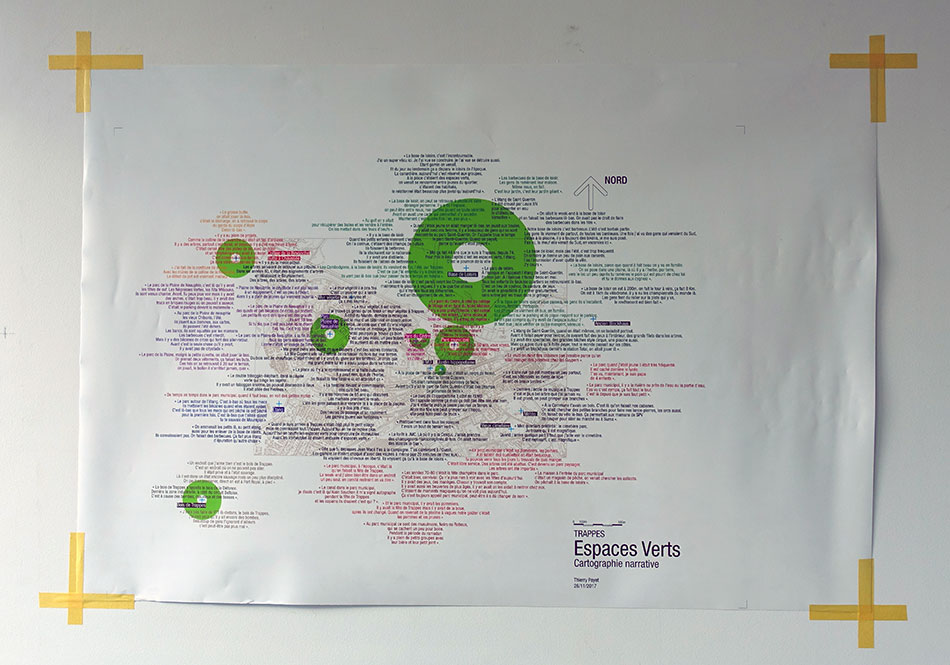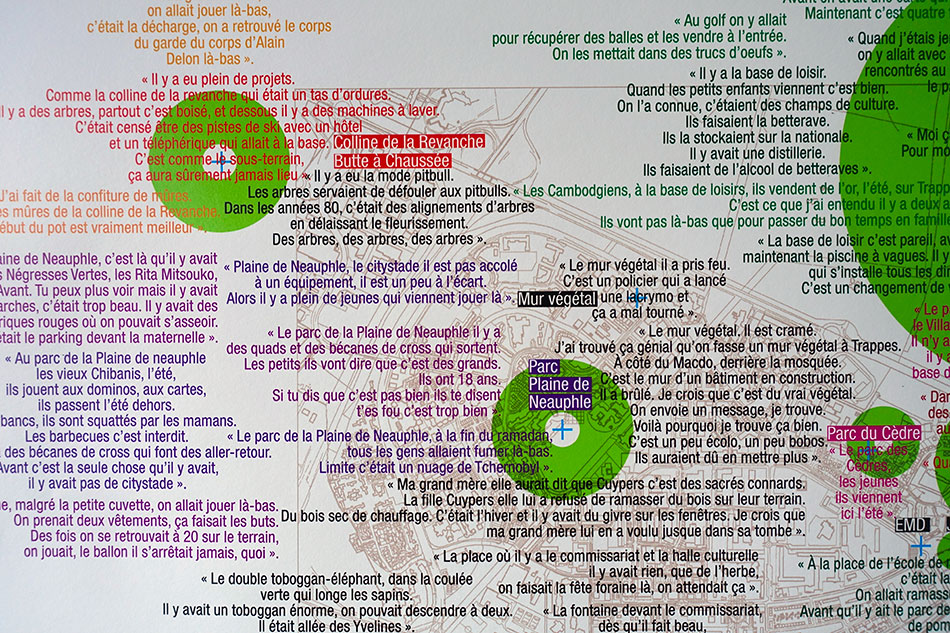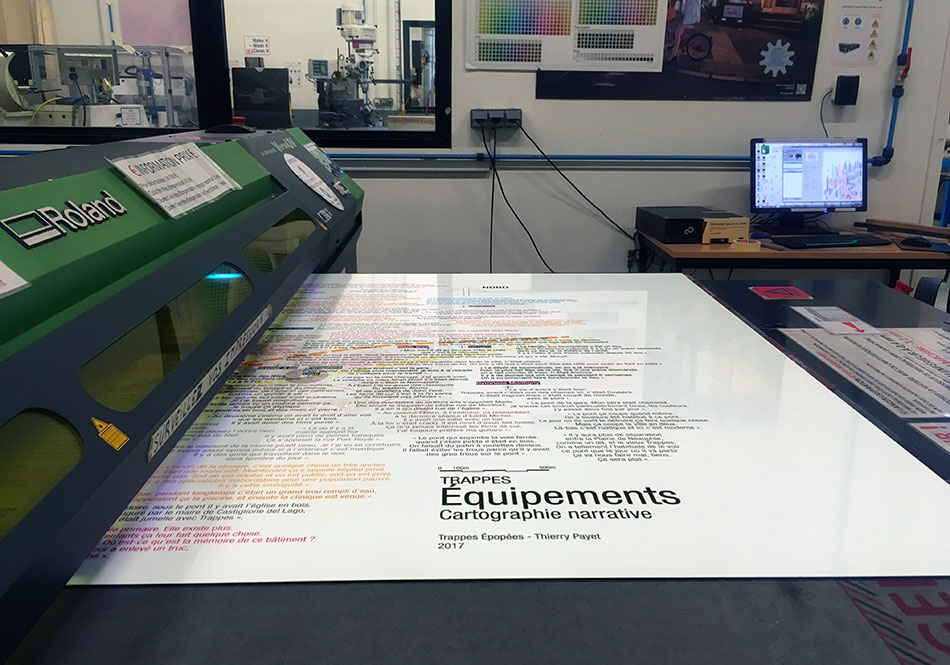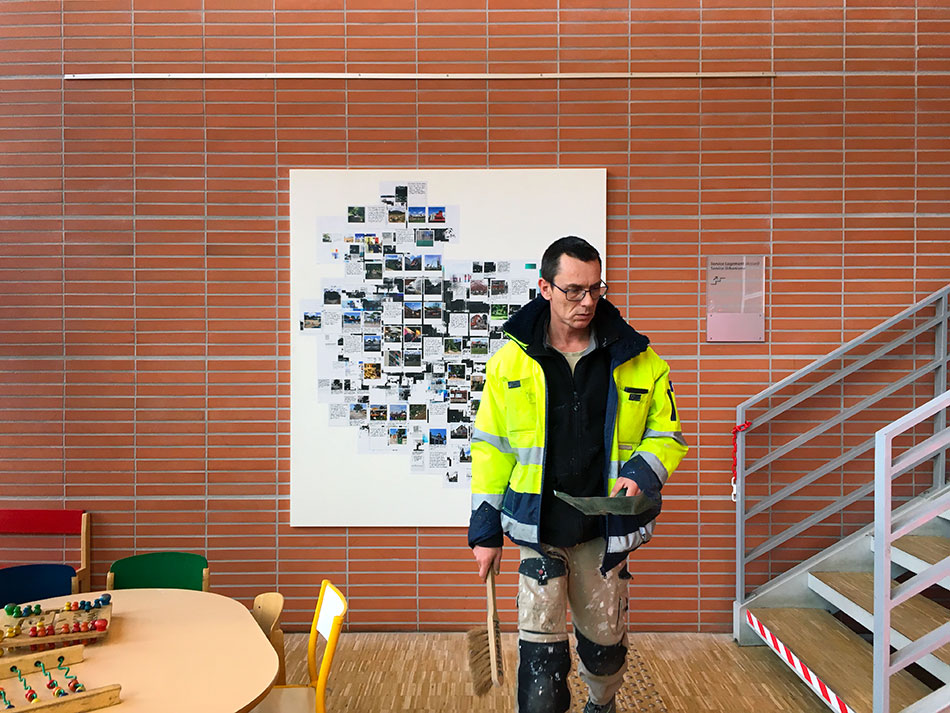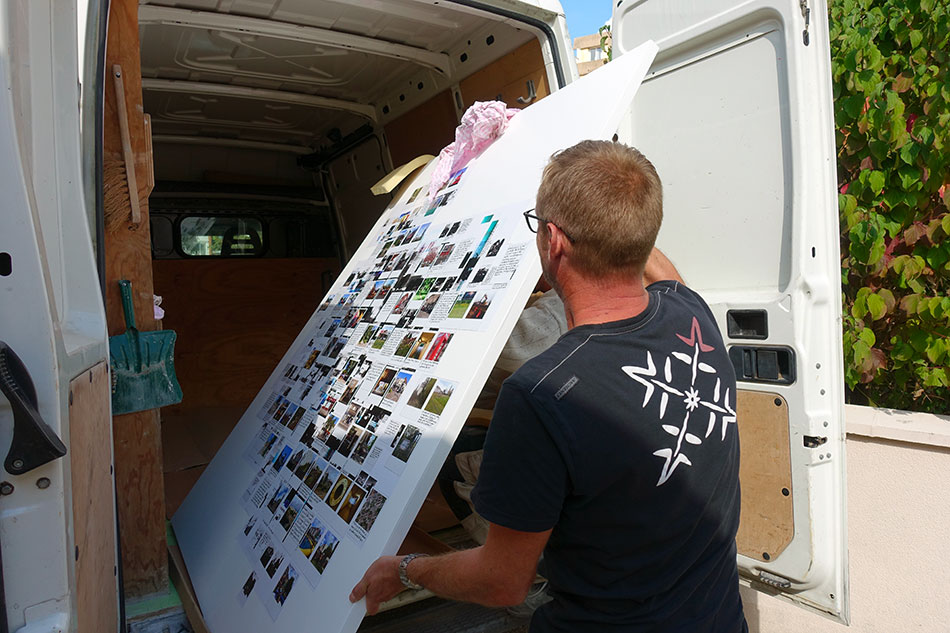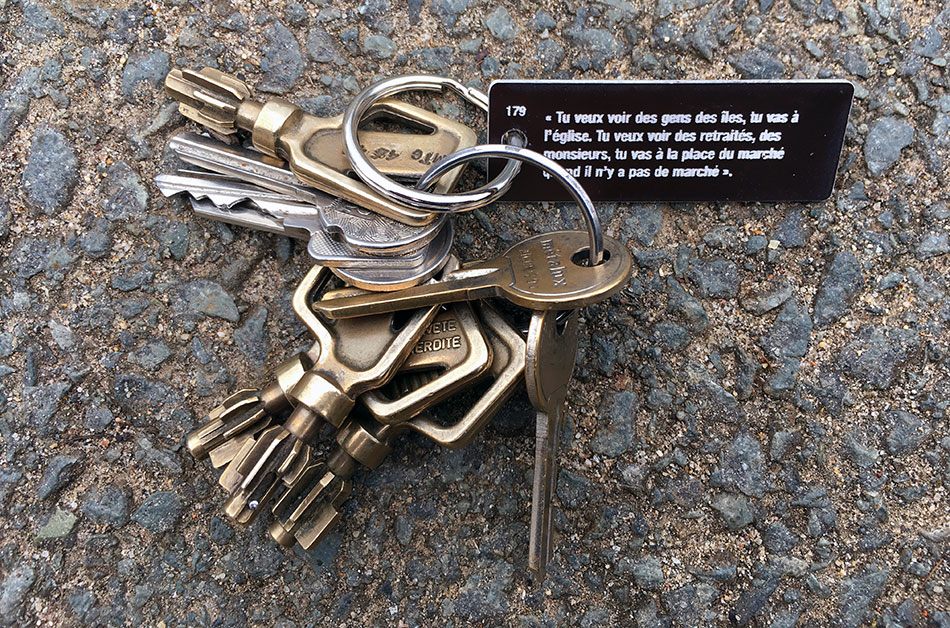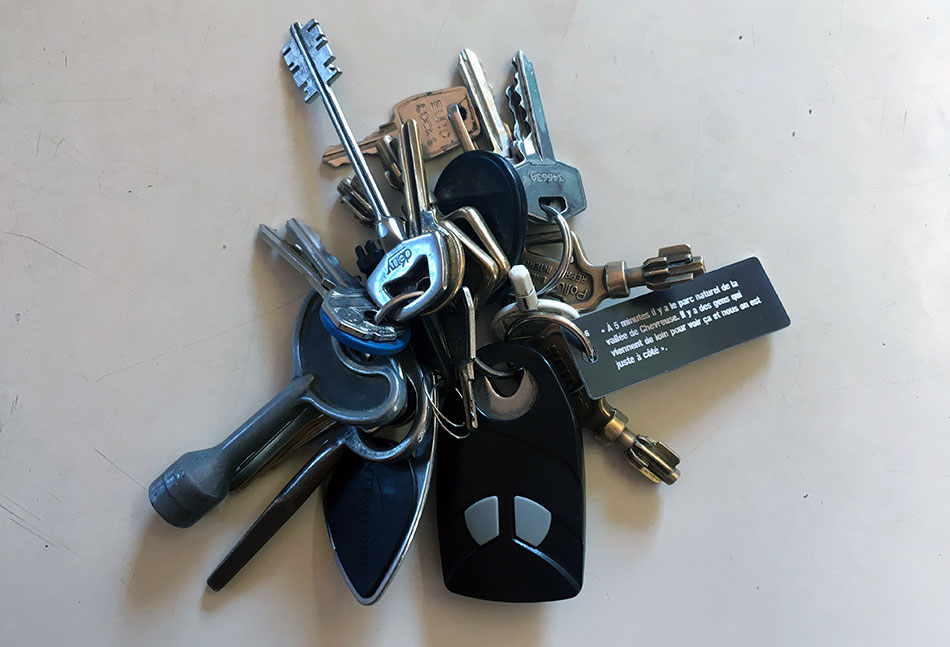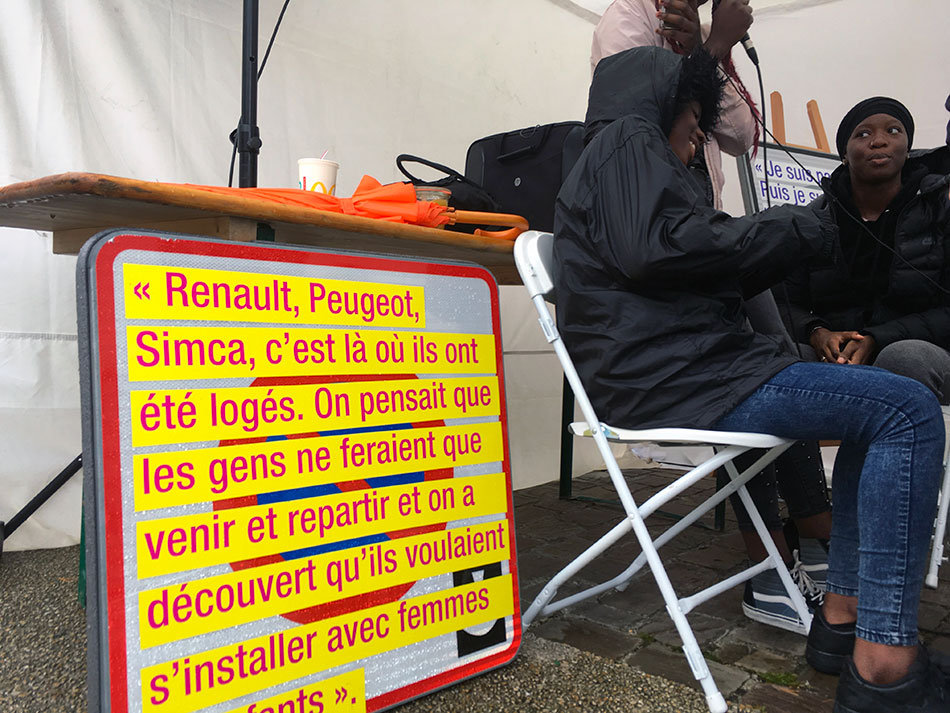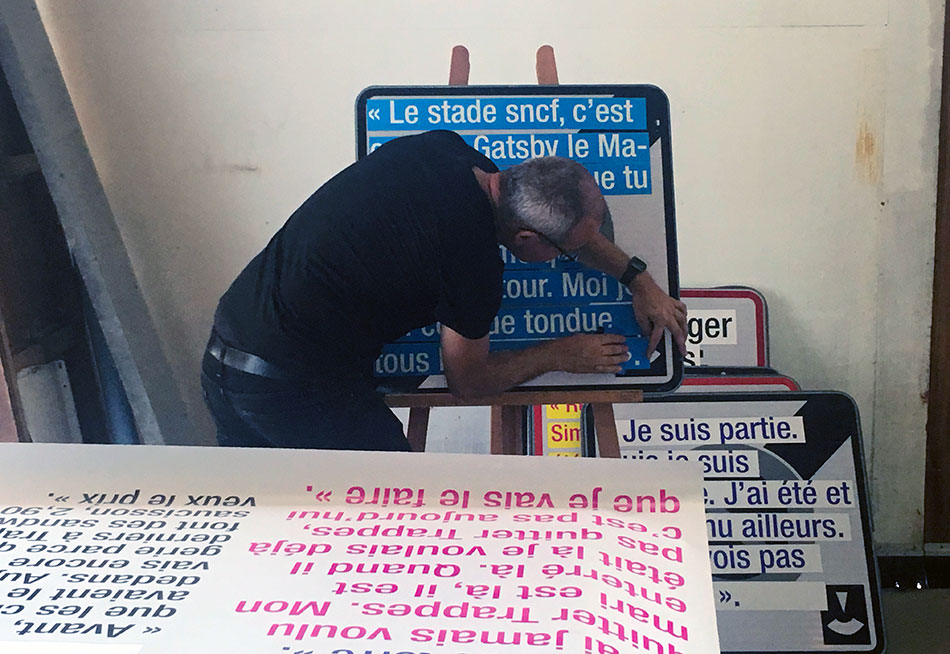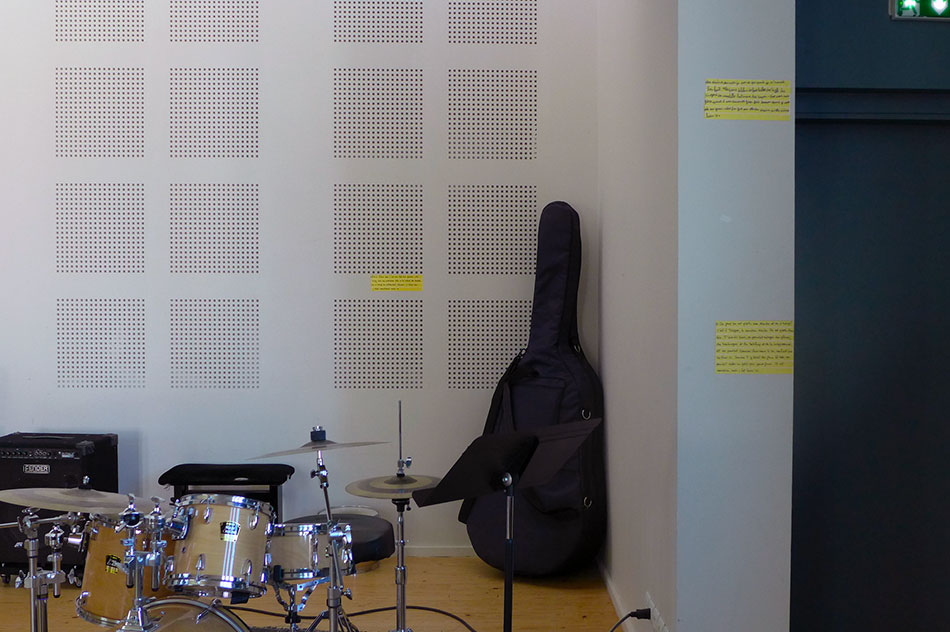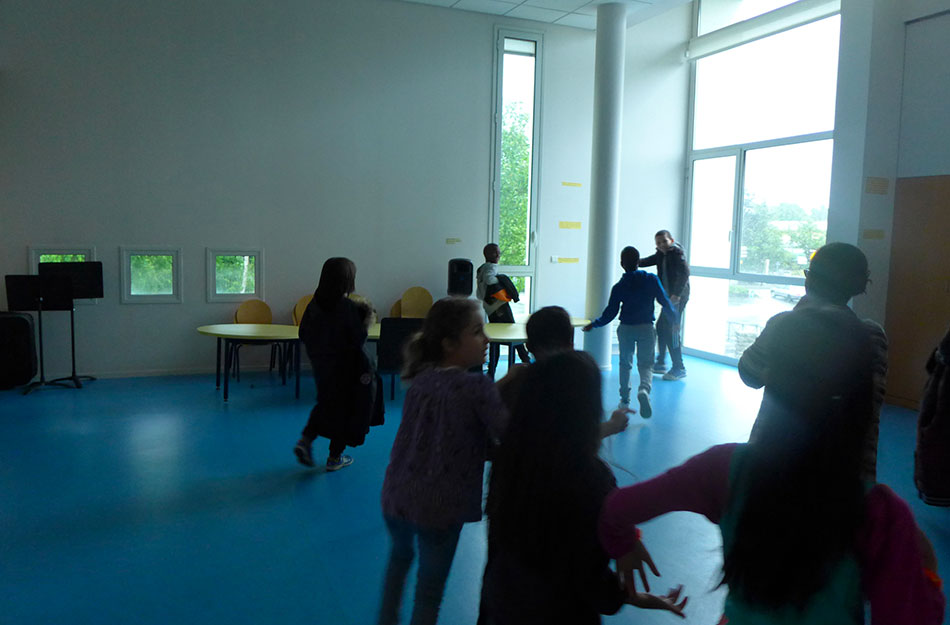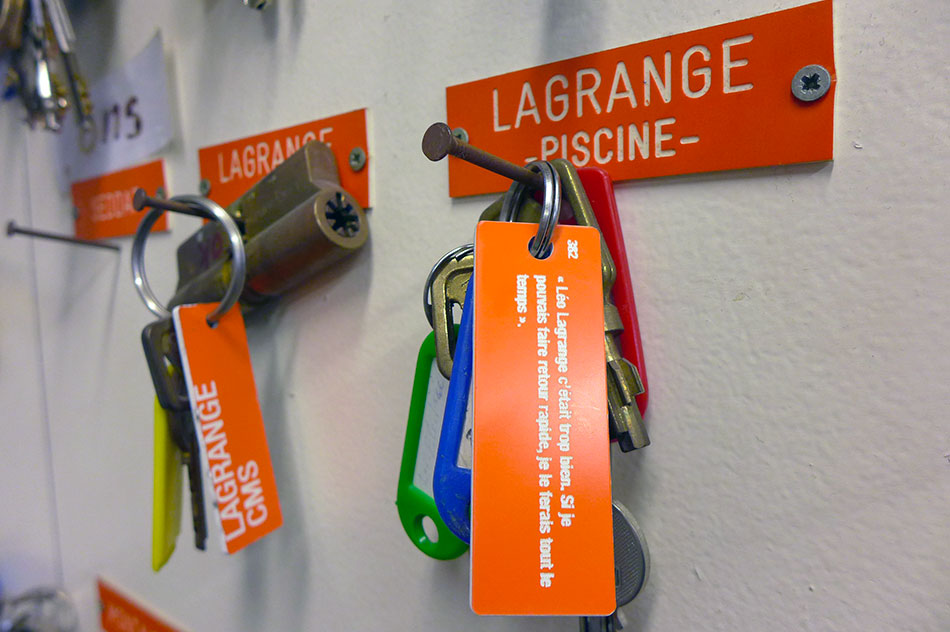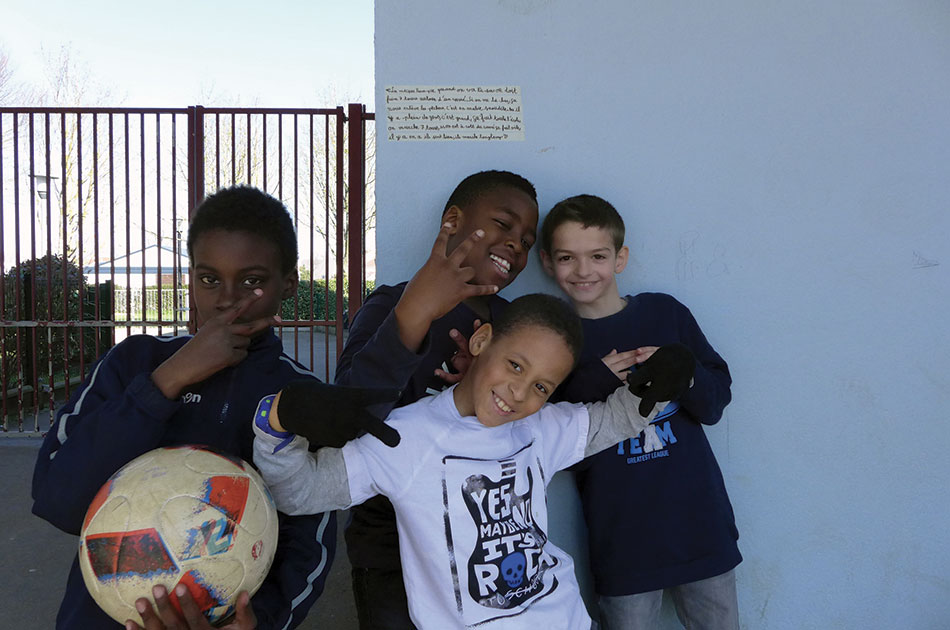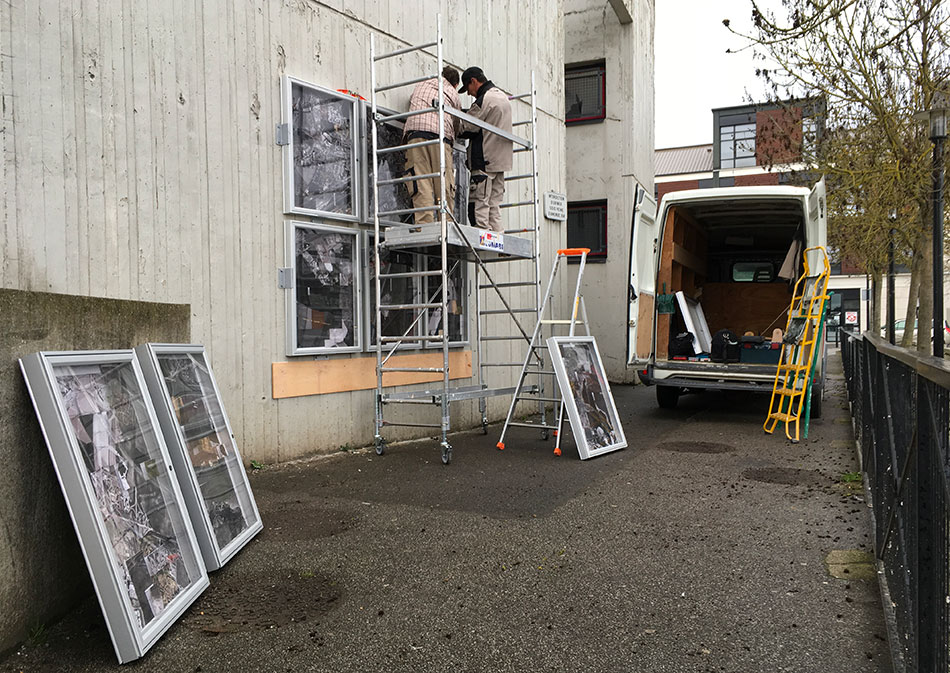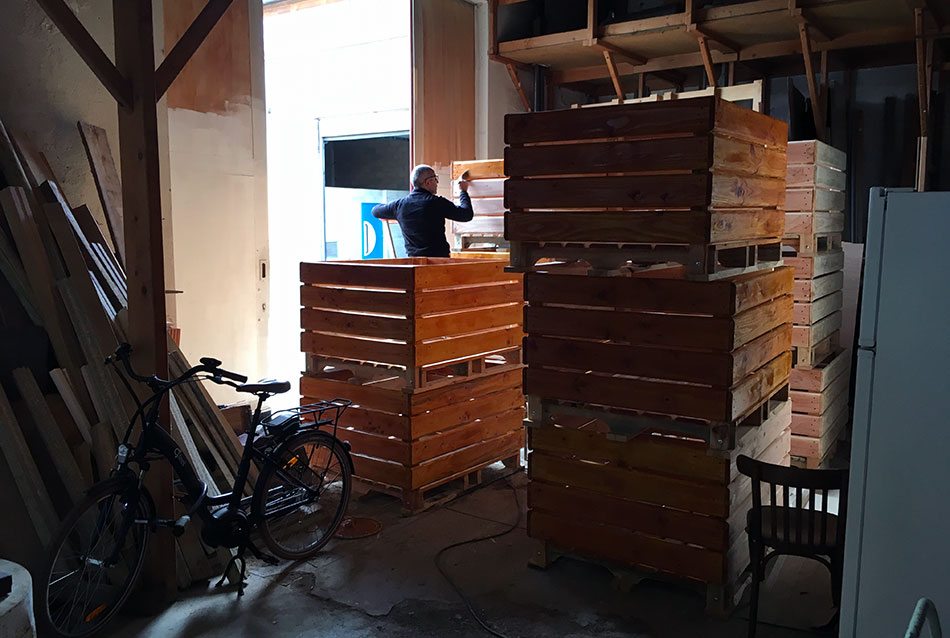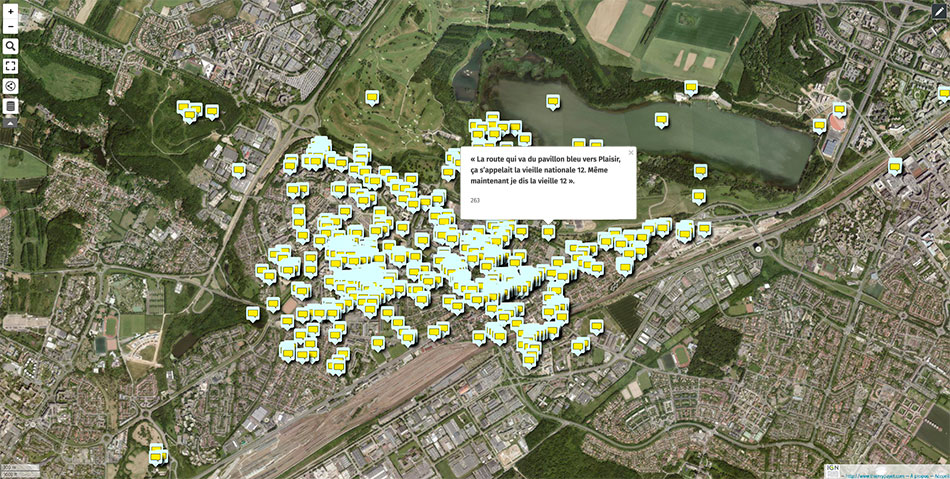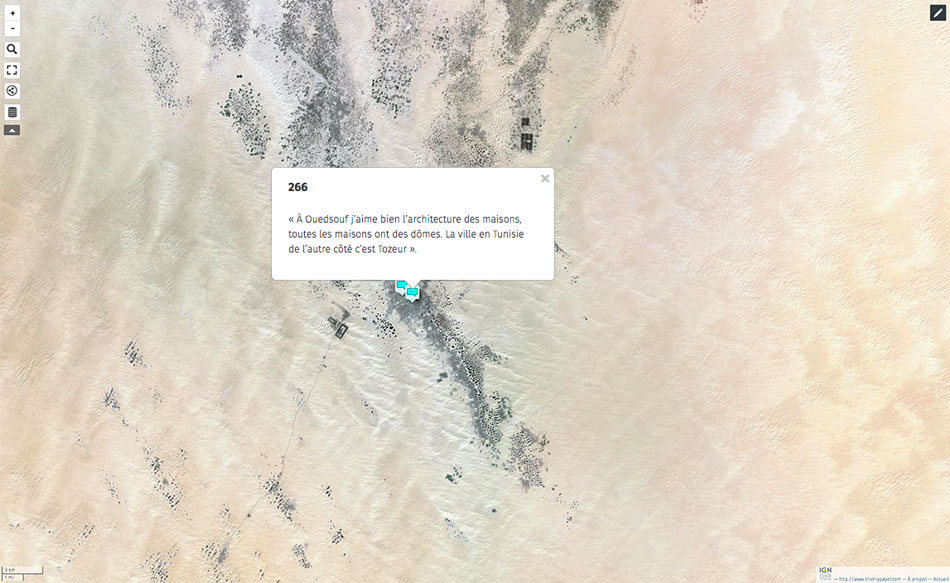| À propos / About | Travaux / Work | Trappes | Self-series | Contact |
THIERRY PAYET Les différentes interventions sont construites en collaboration avec les agents des services et en valorisant les savoir-faire internes de la ville (reprographie) et en particulier les services techniques. The different artworks or actions are implemented using and highlighting the city agents, their know-how and machines, especially the municipal technical department (wood, metal, plumber, keys, garage, roadway, green spaces, cleanliness, paint).
Trappes Épopées
Trappes Épopées est une résidence artistique longue mise en place par la DRAC Ile de France et la ville de Trappes.
Le projet s’inscrit dans un contexte politique brutal : après les premiers attentats de Paris (ceux de “Charlie”), travailler des manières de recréer des liens entre habitants et institutions de la ville de Trappes, en s’attachant spécifiquement au sujet de la transformation urbaine.
Pour y répondre, le projet artistique choisit de se développer — à l’échelle de toute la ville et sur une durée de 4 ans — selon trois phases :
Les épopées sont celles des habitants, un ensemble de manières d’habiter, de pratiques du territoire, anonymes, qui dessinent les contours d’une identité urbaine très forte, en défiance depuis plusieurs siècles, toujours diverses et en transformation (sociale, économique, urbanistique, historique...). Trappes, souvent stigmatisée depuis l’extérieur, a des caractéristiques de ville-monde.
La mise en rapport des narrations individuelles, des espaces vécus, des temporalités :
Le travail artistique a une dimension visible qui incarne les narrations habitantes dans une série de pièces, d'installations :
Le travail a également une dimension invisible, un rôle d'interface et de lien. La résidence infuse le patrimoine humain dans les mécanismes administratifs, scientifiques et techniques de la machine-ville. Elle trouve chaque fois des échos auprès des habitants, des agents municipaux, et des agents-habitants (généralement fiers d'être de Trappes).
En particulier, les dernières phases du travail ont fait émerger un groupe de référents et d'experts. Des personnages qui sont reconnus par les habitants mais pas forcément par la municipalité, en particulier des agents-habitants. Plusieurs services municipaux font appel à eux pour nourir une approche administrative d'une réalité habitante, pour faire émerger d'autres voix que celles de leurs groupes habituels, pour articuler ou pacifier certains sujets ou usages sur lesquels ils ont peu d'emprise, pour valoriser la créativité et la diversité endogènes à la ville.
COMPLÉMENTS :
Page Facebook Trappes Épopées
Vidéo réalisée par la ville de Trappes sur la résidence
----------------------------------------------------------------------------------------------------------------------
Trappes Épopées is an art residency commissioned by the Ministry of Culture (DRAC) and the City of Trappes.
The project is directly connected to a brutal political context : after the Charlie Hebdo terrorist attack in Paris, the government decided to commission an innovative approach creating links between citizens and city institutions and focusing on urban transformation.
Trappes Épopées adresses those issues in a four years long city-scale approach organized in 3 phases :
The epics are those of the inhabitants, a collection of anonymous ways to be on this ground, territory practices, that are framing a strong urban identity, distrustful for centuries, always diverse and transforming (socially, economically, historically, urban). The city of Trappes, generally stigmatized from the outside, has the characteristics of a world-city.
The individual narrations arrangements and connections is organized to :
The artistic approach has a visible dimension that embodies the people narrations in a series of artworks and installations :
The artistic approach has also an invisible dimension, acting as an interface and connection tool. The art-residency slowly infuses the human patrimony into the management and technical mechanism of the city-machine. This informal identity recognition generally receives positive and enthusiast feed-backs from the inhabitants, city agents, and agent-inhabitants (mostly proud to be from Trappes)..
The last phases of the residency have led to create a group of advisors and experts. Inhabitants and agent-inhabitants who have other inhabitants recognition, but not necessarily identified or acknowledged by the municipality. Various city departments (urban planning, chlidhood, culture) are now using their expertise to fuel an administrative approach with behavioral reality, to integrate more diverse feed-backs and voice to their usual groups, to articulate or pacify some sensitive subjects or events, to emphasize the city creativity and diversity.
IN ADDITION :
Facebook page Trappes Épopées
Video made by the City of Trappes on the residency
